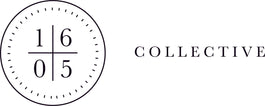Rogier Houwen | Interview
This is an excerpt from the interview with Rogier Houwen in 1605 magazine. Read more in our print version.
Rogier Houwen (b. 1992, The Netherlands) is a photographer whose work showcases his unique vision and style. With a keen eye for detail and a passion for capturing the essence of his subjects, Rogier's photography has received widespread acclaim and recognition.
Known for his ability to create stunning compositions and capture the beauty of everyday moments, Rogier's work is both striking and evocative. His photographs are characterised by his use of light, texture and colour to create images that are both captivating and memorable.
With a diverse range of subjects from portraits to landscapes and everything in between, Rogier's photography is a testament to his creativity and dedication to his craft. His images have been featured in numerous publications and exhibitions, and he has received numerous accolades for his work.
In this interview, we take a closer look at Houwen's creative process, his inspirations and the experiences that have shaped his career as a photographer.

Unveiling the Talent
My first encounter with photography and the printing process in the darkroom 12 years ago was simply magical. I instantly knew this was my way to capture and share my vision of mystical experiences throughout daily life. Photography became a second language that felt very natural to speak and it turned out to be a bridge between my inner world and the outer world. Learning how to speak this language had a meditative effect on me and it softened the harshness of the world I experienced. Before I discovered photography my main inspiration was music. I played the piano and bass from an early age and I collected records. Music taught me how to listen and feel without indulging in thought too much. This is something I integrated into my work as a photographer. My work arises from feeling, not thinking. When there is not a thought in my mind, magic happens.
At the age of 19 I started studying photography at the University of the Arts Utrecht (HKU) where I spent most of my time printing in the darkroom. This space, void of daylight and distractions has an otherworldly quality to it and I was completely captivated by its atmosphere. While being in the darkroom my sense of time evaporates completely so I could easily spend 10 hours at a stretch, without a break. Back then, when I started, I was not into meditation or spiritual practise, but now, looking back, the slow photographic process was a preparation for what is the catalyst for my work at this time: meditation. Shortly after graduating from the academy I embarked on a period of exploration. I went from magic realism and surreal portraits and landscapes to a phase of minimalism to the point of making a photograph of an empty sheet of paper and printing the image of itself on itself. Then in 2017 I experienced an extraordinary event that fundamentally changed my life. It not only affected my artistic practice, it changed my entire perception of existence. Until that moment I had not been involved in meditation or spirituality, although I always had a feeling there was something mysterious beyond the physical and measurable. I remember telling my parents I used to be a buddhist monk from Tibet when I was 8 years old. Later on, at the age of 25, memories of living in Tibet during the Chinese infiltration popped up during meditation. I could recall the people who were close to me, I remembered what my job was, that I was living in a monastery, how I died etc. Bits and pieces of other past lives in Japan and England also spontaneously started to surface from my subconscious. What became clear to me is that life is more than meets the eye.




